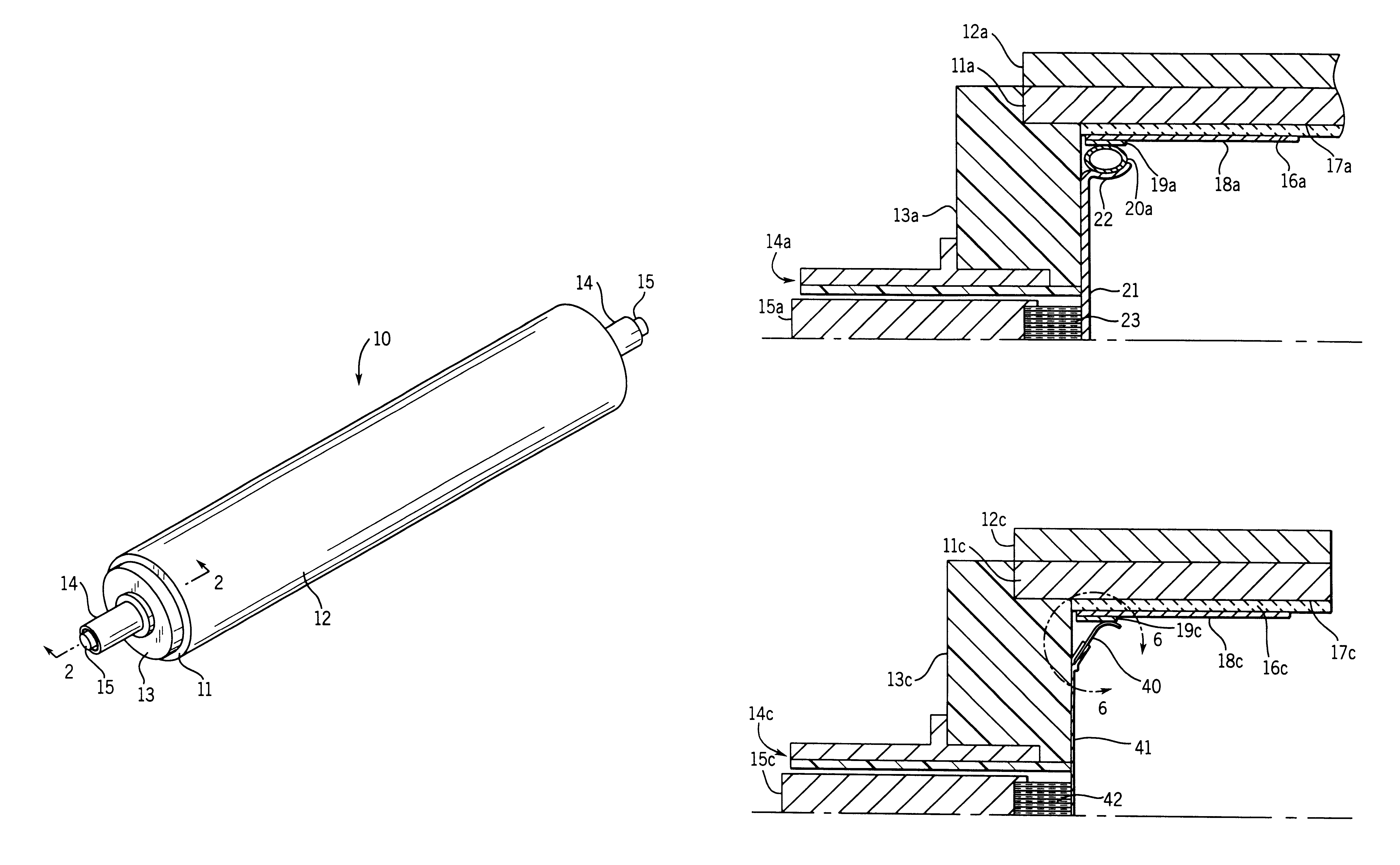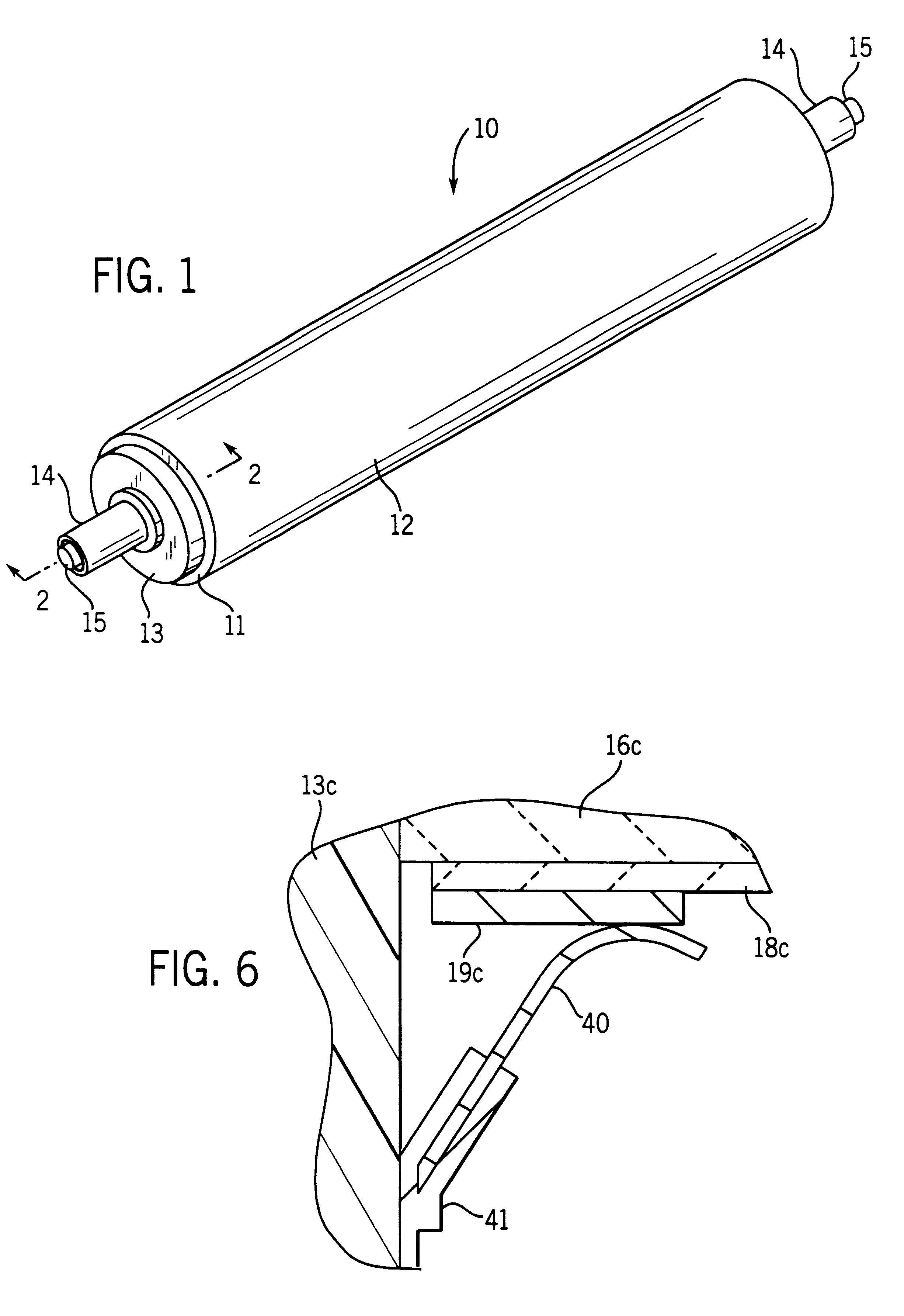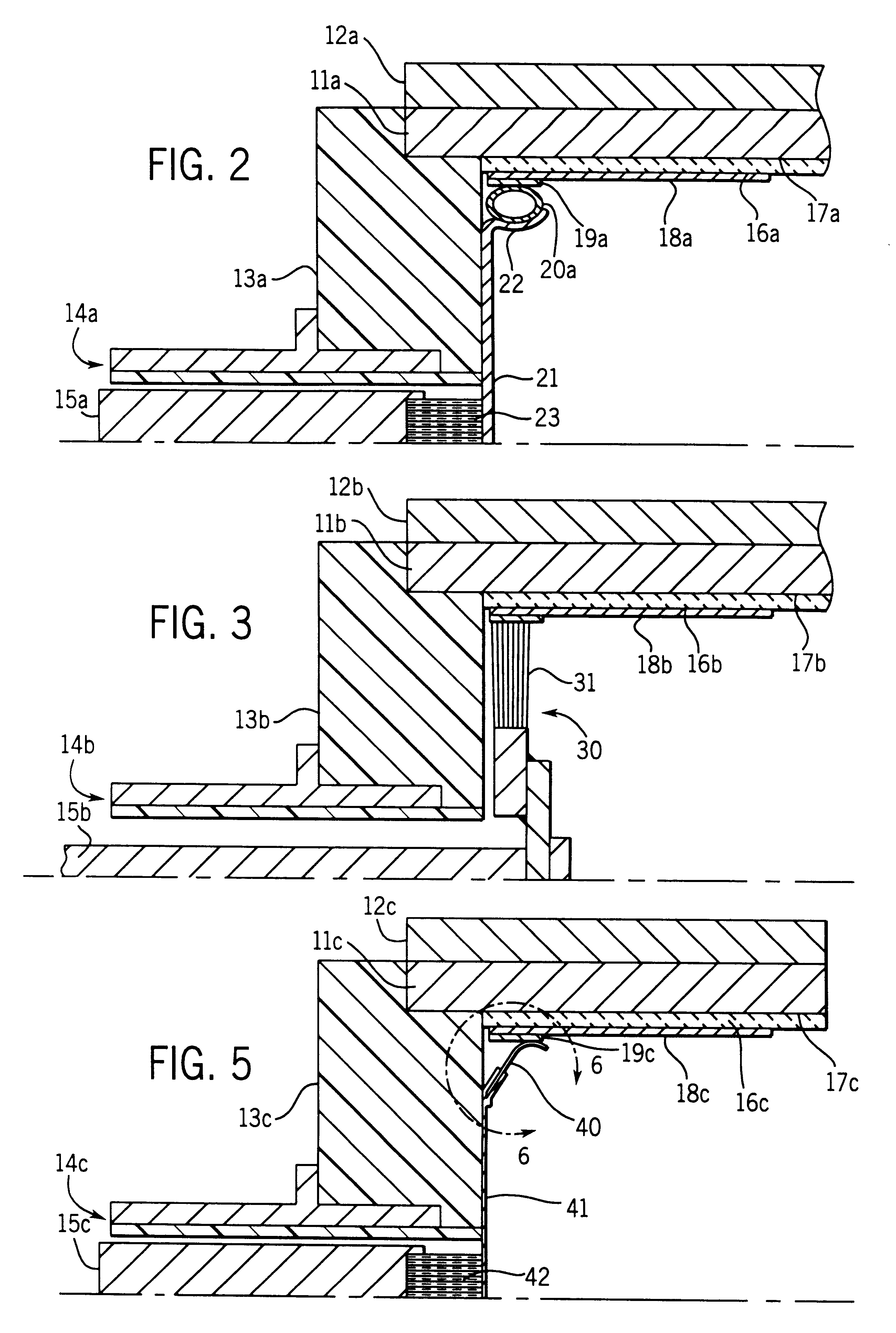Ceramic heater/fuser roller with internal heater
a ceramic heater and roller technology, applied in the field of ceramic heater/fuser roller with internal heater, can solve the problems of inability to adapt to present-day manufacturing and use, insufficient dielectric strength of thinner coat, and inability to meet the requirements of manufacturing and use, so as to achieve easy and straightforward bonding, less danger of damage, and faster ramp time
- Summary
- Abstract
- Description
- Claims
- Application Information
AI Technical Summary
Benefits of technology
Problems solved by technology
Method used
Image
Examples
example 2
Another test roller was made in the same manner as the previous example except that the insulator was a 5 to 6 mil thick layer of Norton 110 alumina. As soon as the power was applied, the roller failed due to dielectric failure of the thin insulator.
example 3
Another test roller was made in the same manner as the first example except that the insulator was a 10-mil thick layer of Norton 204 stabilized zirconia. This roller was cycled 9000 times 160.degree. F. to 520.degree. F. without failure. The temperature was increased and the roller was cycled an additional 8000 times to 600.degree. F. Increasing the maximum temperature to 700.degree. F. resulted in dielectric failure of the insulator (208 volts AC) after about 118 cycles.
example 4
Another test roller was made like example 3 except that the core was 3.times.16 inch tube, 0.125 inch wall, of aluminum. Cycling the roller to 400.degree. F. dramatically increased its resistance due to the thermal expansion difference between ceramic and aluminum. The cycling was discontinued after 2529 cycles to 400.degree. F. without failure, because the ramp rate was slower than desired.
PUM
| Property | Measurement | Unit |
|---|---|---|
| thickness | aaaaa | aaaaa |
| thickness | aaaaa | aaaaa |
| thickness | aaaaa | aaaaa |
Abstract
Description
Claims
Application Information
 Login to View More
Login to View More - R&D
- Intellectual Property
- Life Sciences
- Materials
- Tech Scout
- Unparalleled Data Quality
- Higher Quality Content
- 60% Fewer Hallucinations
Browse by: Latest US Patents, China's latest patents, Technical Efficacy Thesaurus, Application Domain, Technology Topic, Popular Technical Reports.
© 2025 PatSnap. All rights reserved.Legal|Privacy policy|Modern Slavery Act Transparency Statement|Sitemap|About US| Contact US: help@patsnap.com



